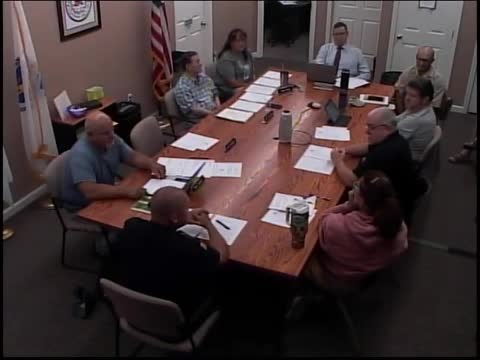Town faces critical decision on public safety facility upgrade
August 01, 2024 | Town of Hubbardston, Worcester County, Massachusetts

This article was created by AI summarizing key points discussed. AI makes mistakes, so for full details and context, please refer to the video of the full meeting. Please report any errors so we can fix them. Report an error »

In a recent government meeting, officials discussed critical infrastructure needs for the town's public safety facilities, highlighting the urgent necessity for upgrades and renovations. The current fire department building, constructed in 1961, is facing significant challenges due to outdated design and insufficient space for modern fire apparatus, which have increased in size and capacity over the years.
The fire chief emphasized that the existing station lacks adequate facilities, particularly for female personnel, and struggles to accommodate larger fire trucks, which are essential for effective emergency response. The limitations of the current building not only hinder operational efficiency but also pose safety risks for both responders and the community.
Committee member Mike Stahl presented a balanced approach to addressing these issues, suggesting that maintaining the status quo is unsustainable and that building entirely new facilities would be prohibitively expensive. Instead, he advocated for a middle-ground solution that would allow for necessary improvements without incurring excessive costs. Stahl warned that failing to act promptly could result in missed opportunities for funding and grants, which could enhance public safety and operational capabilities.
Concerns were raised about the potential loss of the current facility if it were sold to a private entity, which could jeopardize the town's emergency services. The discussion underscored the importance of securing a suitable location for public safety operations, as alternatives are limited and could lead to increased costs and logistical challenges.
Several members expressed their initial hesitations about funding such projects but acknowledged the long-term benefits of investing in public safety infrastructure. The consensus was that proactive measures are essential to avoid future financial burdens, particularly as the town's population ages and demands for emergency services increase.
As the meeting concluded, officials reiterated the importance of making timely decisions regarding public safety facilities, emphasizing that the costs of inaction could far exceed the investments required for necessary upgrades.
The fire chief emphasized that the existing station lacks adequate facilities, particularly for female personnel, and struggles to accommodate larger fire trucks, which are essential for effective emergency response. The limitations of the current building not only hinder operational efficiency but also pose safety risks for both responders and the community.
Committee member Mike Stahl presented a balanced approach to addressing these issues, suggesting that maintaining the status quo is unsustainable and that building entirely new facilities would be prohibitively expensive. Instead, he advocated for a middle-ground solution that would allow for necessary improvements without incurring excessive costs. Stahl warned that failing to act promptly could result in missed opportunities for funding and grants, which could enhance public safety and operational capabilities.
Concerns were raised about the potential loss of the current facility if it were sold to a private entity, which could jeopardize the town's emergency services. The discussion underscored the importance of securing a suitable location for public safety operations, as alternatives are limited and could lead to increased costs and logistical challenges.
Several members expressed their initial hesitations about funding such projects but acknowledged the long-term benefits of investing in public safety infrastructure. The consensus was that proactive measures are essential to avoid future financial burdens, particularly as the town's population ages and demands for emergency services increase.
As the meeting concluded, officials reiterated the importance of making timely decisions regarding public safety facilities, emphasizing that the costs of inaction could far exceed the investments required for necessary upgrades.
View full meeting
This article is based on a recent meeting—watch the full video and explore the complete transcript for deeper insights into the discussion.
View full meeting
